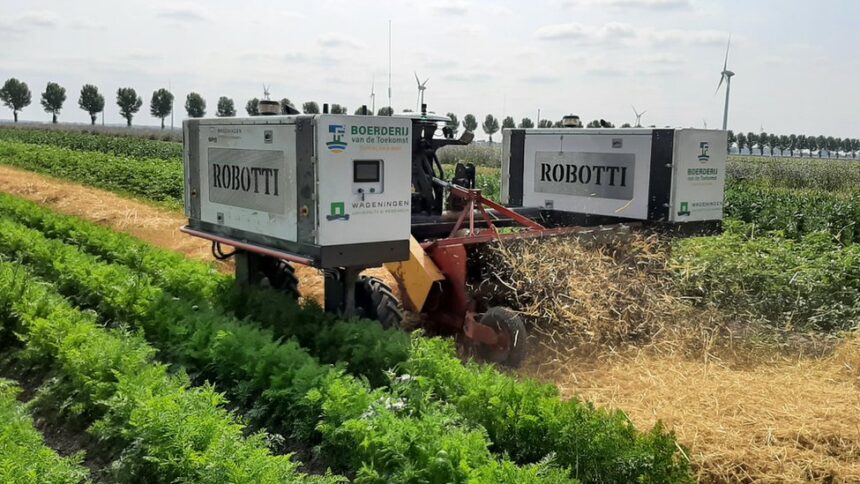The tractor is the backbone of modern farming, providing power and versatility to farmers. These machines come in various types and sizes, allowing farmers to efficiently perform a wide range of tasks such as plowing, planting, and harvesting. With the addition of implement attachments, tractors can further enhance their capabilities. From tilling the soil to hauling heavy loads, tractors are indispensable tools for today’s farmers.
Tractor Types and Efficiency
Tractors come in various types, each designed for specific farming tasks. Compact tractors are ideal for small farms and maneuvering tight spaces, while utility tractors offer more power and versatility. Row-crop tractors are designed for row-crop farming, and specialty tractors cater to unique needs like orchard or vineyard work. Regardless of type, tractors greatly enhance efficiency on the farm by providing the necessary power and capabilities to complete tasks quickly and effectively.
Implement Attachments for Tractors
Tractors are versatile machines that can be equipped with a variety of implement attachments to enhance their functionality. These attachments allow farmers to perform specific tasks more efficiently, such as plowing, tilling, planting, and harvesting. Some common implement attachments include front-end loaders for lifting heavy objects, rotary tillers for preparing the soil, and balers for baling hay. By utilizing these attachments, like farmers.pk, farmers can maximize the productivity of their tractors and streamline their farming operations.
Combine Harvester: Revolutionizing Harvesting
The combine harvester has revolutionized the way farmers harvest their crops. This powerful machine combines multiple functions, including cutting, threshing, and winnowing, into a single operation. It saves time and labor by efficiently harvesting crops such as wheat, corn, and soybeans. With its advanced technology and large capacity, the combine harvester has become an essential tool for modern farmers in maximizing their harvests.
Combine Harvester Functionality
A combine harvester is a versatile machine that combines several operations in one. It cuts the crops, separates the grains from the stalks, and removes any impurities. The harvested grain is collected in a tank while the waste material is expelled. This efficient process saves time and labor, allowing farmers to maximize their harvests with ease.
Benefits of Using a Combine Harvester
Using a combine harvester offers several benefits to farmers. Firstly, it significantly reduces labor and time required for harvesting crops. The machine’s efficiency allows for increased productivity and larger harvest yields. Additionally, the combine harvester ensures minimal grain loss and separates impurities effectively. Overall, this versatile machine streamlines the harvesting process, making it essential for modern farmers.
Precision Agriculture Technology: Enhancing Farming Practices
Precision agriculture technology is revolutionizing farming practices by harnessing the power of advanced tools and techniques. GPS guidance systems enable farmers to optimize field operations with precision, reducing waste and increasing efficiency. Drones play a crucial role in monitoring crops, identifying areas for improvement, and providing valuable data for analysis. These technologies empower farmers to make informed decisions, maximize yields, and minimize environmental impact.
GPS Guidance Systems for Precision Farming
GPS guidance systems have revolutionized precision farming practices. These advanced tools provide farmers with accurate positioning and navigation, allowing them to optimize field operations with precision. By reducing overlap and minimizing wasted inputs, GPS guidance systems increase efficiency and productivity on the farm. Farmers can now precisely track their activities, resulting in cost savings and improved yields.
Drones in Agriculture: Monitoring and Analysis
Drones have become an invaluable tool in modern agriculture for monitoring and analysis purposes. Equipped with high-resolution cameras and sensors, drones can capture aerial images of fields, providing farmers with valuable insights into crop health and growth patterns. These images can be analyzed to identify areas that require attention, such as pest infestations or nutrient deficiencies. Drones also enable farmers to survey their entire farm quickly and efficiently, saving time and resources.
Irrigation Systems: Ensuring Optimal Crop Watering
Irrigation systems play a crucial role in ensuring that crops receive the right amount of water for optimal growth. Drip irrigation systems are designed to deliver water directly to the roots, minimizing water wastage and maximizing efficiency. Center pivot irrigation systems are ideal for large farms, covering a vast area with a rotating arm that distributes water evenly. These systems help farmers achieve higher crop yields while conserving water resources.
Drip Irrigation Systems for Water Efficiency
Drip irrigation systems are a popular choice among farmers for their water efficiency. These systems deliver water directly to the roots of plants, minimizing evaporation and runoff. By providing a slow and steady supply of water, drip irrigation ensures that crops receive just the right amount they need for optimal growth. This not only conserves water but also reduces the risk of overwatering or underwatering crops. Farmers can also save on labor and energy costs with these efficient systems.
Grain Dryers: Preserving Quality After Harvest
Grain dryers play a crucial role in preserving the quality of crops after harvest. By removing excess moisture, these machines prevent spoilage and maintain the nutritional value of grains. Different types of grain dryers are available, including batch dryers and continuous flow dryers, each with its own advantages. Investing in a reliable grain dryer ensures that farmers can store their harvest for longer periods while maintaining its quality.
Read more: Elevate Your Style Game With Unveiling the Best Men’s Brand of the Year
Conclusion
In conclusion, the use of modern agricultural machines, such as tractors, combine harvesters, precision agriculture technology, irrigation systems, and grain dryers, has significantly improved farming efficiency. These machines have revolutionized farming practices by increasing productivity and preserving crop quality. As technology continues to advance, we can expect even more innovative solutions to further enhance the future of agriculture.




